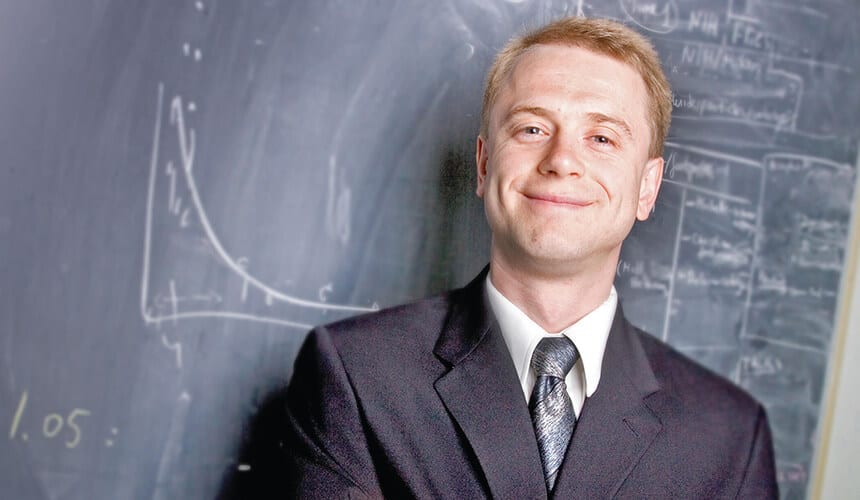Rustem Ismagilov
Nobel-Caliber Discoveries
Think of your high school chemistry lab shrunk down smaller than the palm of your hand. Now you are in Rustem Ismagilov’s world.
A former Harvard researcher and professor at the University of Chicago, Ismagilov moved to the California Institute of Technology to become a professor of chemistry and chemical engineering. He also moved his research group, which has already published an astounding 141 papers.
Ismagilov uses a tool called microfluidics, systems of hair-thin pipes that move tiny droplets of liquid, combine them, analyze their chemistry, or sort bits of DNA. These devices could revolutionize medical diagnostics and facilitate new types of experiments.

Ismagilov was a 2012 winner of the Wisconsin Alumni Association’s Forward under 40 award. (Photo by of Lance Hayashida / Cal Tech.)
His lab is currently using these technologies to develop diagnostics for antimicrobial resistance and to understand microbial interactions in the human microbiome (that is, the collection of microorganisms found in a human body). Another potential use is tracking how HIV medicines are working by measuring microscopic substances in patients’ blood much more efficiently and affordably.
Steve Nelsen of the UW–Madison Department of Chemistry says Ismagilov rapidly developed into one of the most important researchers in the microfluidics field. Ismagilov says he uses a multidisciplinary approach to unearth chemical and biological complexity on the molecular and systemic levels. Chemistry, physics, biology, and engineering contribute to his advances in microfluidic techniques.
Ismagilov was a 2012 winner of the Wisconsin Alumni Association’s Forward under 40 award, which honors young alumni for significant achievement. He was recognized as the most outstanding chemist under the age of forty by the American Chemical Society in 2008, and his list of awards includes high honors from the National Institutes of Health and the National Academy of Sciences.
Nelsen says Ismagilov’s work investigating blood flow allowed him to explain why capillaries have a unique shape — a finding that could have applications for disease diagnosis or medicines in the future. He also lauded Ismagilov’s work on crystallizing proteins, the building blocks of life.
“Rustem’s research is of seminal importance,” Nelsen says. “I would not be surprised if it eventually results in a Nobel Prize in Chemistry.”
 64° F
64° F